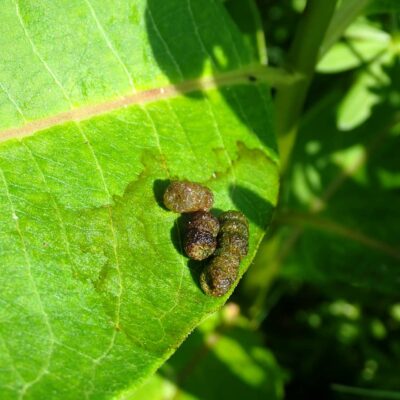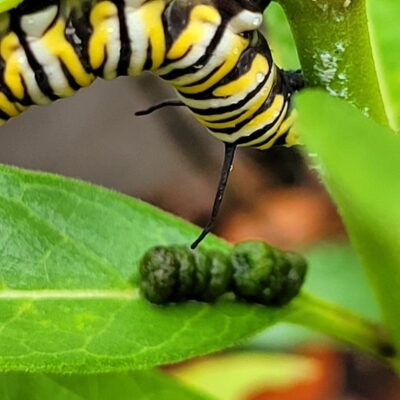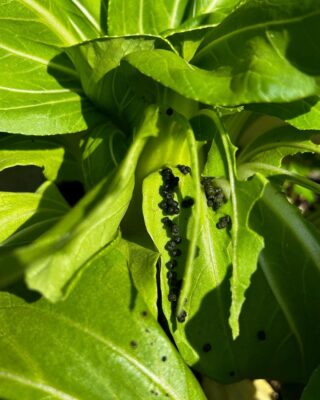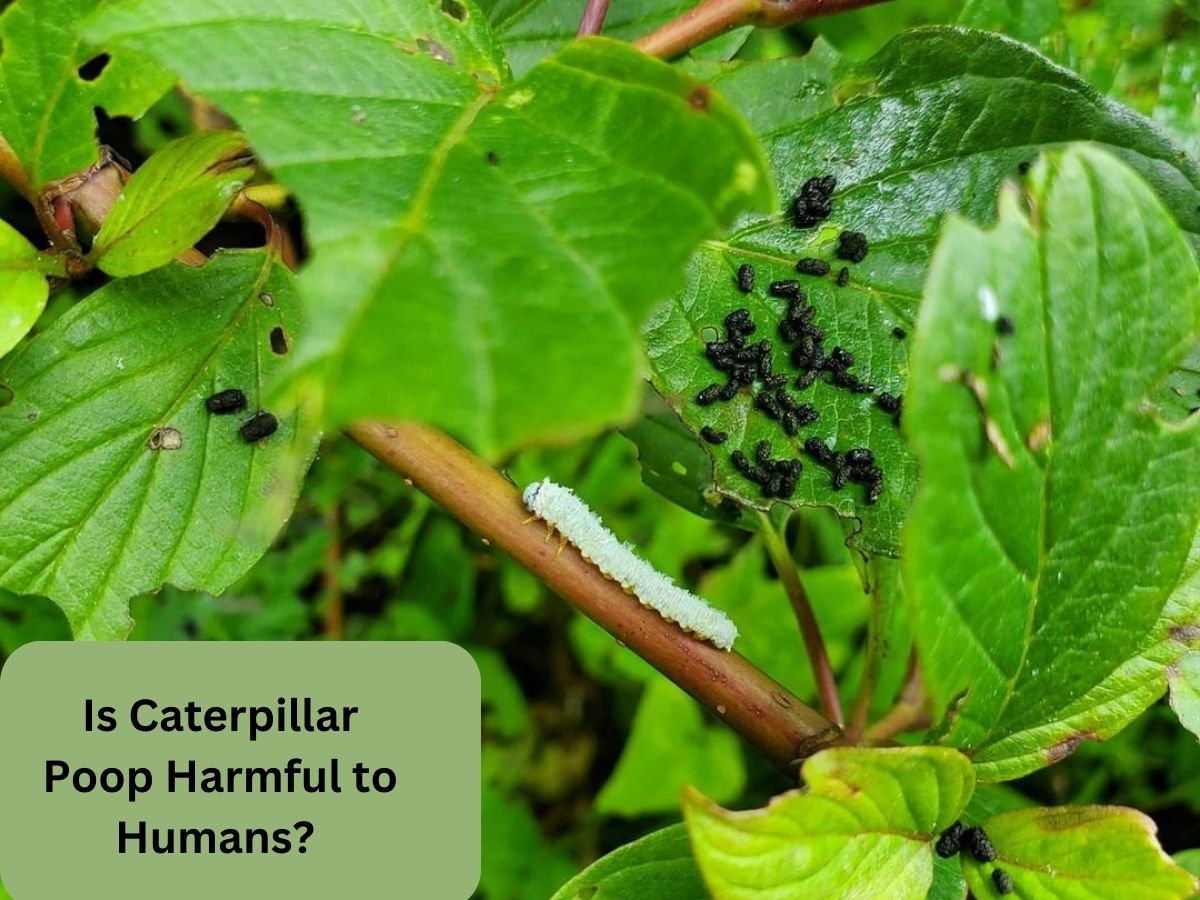Curious about whether caterpillar poop is harmful to humans? You’re not alone! Caterpillar poop, scientifically known as frass, often catches our attention while we’re exploring the outdoors or tending to our gardens. But fret not – in this article, we’re diving deep into this intriguing topic to shed light on whether caterpillar poop poses any risks to us.
In a nutshell, caterpillar poop, scientifically known as frass, raises questions about its possible toxicity and the risks it might pose to our well-being. Let’s embark on a journey through the world of caterpillar excrement, separating fact from fiction and discovering the fascinating truths behind this tiny, often overlooked element of nature.
So, is caterpillar poop harmful to humans? The short answer is: NO. While it might sound off-putting, caterpillar poop is a natural byproduct of their diet and digestion process. In fact, it even plays a role in nurturing the environment. Join us as we uncover the truth about caterpillar poop and put any concerns to rest.
What is Caterpillar Poop?
Caterpillar poop, also known as frass, is the natural excrement produced by caterpillars as a result of their digestion process. As caterpillars feed on leaves and plant material, their bodies extract nutrients needed for growth and development.
However, not all of the ingested material can be fully digested and utilized by the caterpillar. The indigestible remnants, along with waste products produced during digestion, are expelled from the caterpillar’s body in the form of frass.
In the caterpillar life cycle, frass serves a crucial ecological purpose. It’s not just a waste product; it plays a role in nutrient cycling within ecosystems. When frass is released into the environment, it enriches the soil with organic matter and nutrients that support the growth of plants.
This nutrient enrichment benefits not only the immediate ecosystem but also contributes to the health and vitality of the surrounding flora.
What sets caterpillar poop apart from other types of animal waste is its composition and purpose. Unlike some forms of waste that might be released as defense mechanisms or territorial markings, caterpillar frass is a byproduct of their dietary needs.
It consists mainly of undigested plant material and waste products from the caterpillar’s digestive process. This sets it apart from other waste types that might have distinct functions within the animal’s survival strategy.
The ecological role of caterpillar poop in enhancing soil fertility further distinguishes it from waste produced by animals with different roles in ecosystems.
Composition of Caterpillar Poop
The composition of caterpillar poop, or frass, provides a fascinating insight into the digestive process of these insects. Frass primarily consists of two main components: digested plant material and waste products generated during the caterpillar’s digestion.
- Digested Plant Material: Caterpillars are voracious eaters, consuming leaves and plant parts to fuel their growth. As they ingest these plant materials, their digestive systems work to break down complex compounds like cellulose and extract the nutrients necessary for their development. However, not all of the plant material can be fully broken down and absorbed. The undigested remnants, which include fibers, lignin, and other plant compounds, make up a significant portion of the grass.
- Waste Products: In addition to undigested plant matter, caterpillar frass contains waste products produced during the digestive process. These waste products are the result of the breakdown of nutrients, metabolic processes, and the removal of substances that the caterpillar’s body doesn’t require. These waste products contribute to the overall composition of frass.
Nutritional Value of Frass in Ecosystems:
Interestingly, the seemingly unremarkable frass holds significant value in the intricate balance of ecosystems. As caterpillars feed on a variety of plants, the frass they produce contains a mixture of nutrients from these plants.
When frass is deposited onto the soil beneath plants, it enriches the soil with organic matter and essential nutrients like nitrogen, phosphorus, and potassium. These nutrients are then made available to the surrounding vegetation, promoting their growth and vitality.
In essence, frass acts as a natural fertilizer, contributing to the overall health and productivity of ecosystems. The nutritional value of frass extends beyond the caterpillar itself, benefiting a wide range of organisms, from plants and fungi to soil-dwelling microorganisms. It’s a prime example of nature’s efficient recycling process, where even waste products play a vital role in sustaining life.
So, while caterpillar poop might not appear glamorous at first glance, its role as a nutrient-rich soil enhancer underscores its importance in maintaining the delicate balance of ecosystems and supporting the flourishing of various organisms within them.
Is Caterpillar Poop Toxic?
You might be wondering whether caterpillar poop, also known as frass, poses any toxicity concerns for humans. Rest assured, caterpillar poop is generally not toxic to humans in the way that some hazardous substances might be.
While frass does contain compounds that could be considered toxins in higher concentrations, the reality is that the levels of these compounds in caterpillar poop are typically quite low.
Caterpillar poop primarily consists of undigested plant material and waste products from their digestive processes. While these components might contain some natural compounds that could potentially cause harm in large amounts, the quantities found in frass are unlikely to pose a significant risk to human health, especially through casual contact.
It’s important to remember that caterpillar poop serves its purpose in the caterpillar’s life cycle and within ecosystems, contributing to nutrient cycling and soil enrichment. However, the concerns about its toxicity to humans are generally unfounded.
So, if you come into contact with caterpillar poop while exploring the outdoors or tending to your garden, there’s no need to worry about toxic effects. Just be sure to practice good hygiene by washing your hands after handling it, as you would with any outdoor activity.

Can caterpillar poop transmit diseases to humans?
Rest assured, the risk of caterpillar poop transmitting diseases to humans is extremely low. Caterpillars and their excrement are not known vectors for human diseases. Unlike certain insects, such as mosquitoes or ticks, that can transmit diseases through their bites, caterpillars do not possess the mechanisms necessary to transmit diseases to humans.
Caterpillar poop primarily consists of undigested plant material and waste products from their digestive processes. While it might seem like a concern, the specialized digestive systems of caterpillars are not designed to harbor or transmit human pathogens.
It’s important to recognize that the transmission of diseases between species typically involves complex interactions and adaptations that caterpillars lack.
So, when it comes to caterpillar poop, you can rest assured that the likelihood of contracting diseases from it is extremely remote. While it’s wise to practice basic hygiene, such as washing your hands after outdoor activities, fears about disease transmission from caterpillar poop are unfounded.
Potential Harmful Microorganisms
While concerns about harmful microorganisms, bacteria, or pathogens in caterpillar poop are understandable, the good news is that caterpillar poop typically doesn’t pose a significant health risk to humans. The specialized digestive systems of caterpillars play a crucial role in minimizing the presence of harmful organisms in their frass.
Caterpillars have evolved over millions of years to process and extract nutrients from the plant material they consume. Their digestive systems are adapted to break down plant compounds while also deterring the growth of potentially harmful microorganisms.
This specialized digestion process, combined with the fact that caterpillar frass is often dry and compact, creates an environment that is generally unfavorable for the survival and proliferation of harmful bacteria or pathogens.
Unlike waste products from animals that are more closely associated with transmitting diseases to humans, such as rodents or insects like flies, caterpillar poop is not a known vector for human diseases. The risk of contracting illnesses from coming into contact with caterpillar frass is extremely low.
As with any outdoor activity, practicing good hygiene by washing your hands after handling natural elements like caterpillar poop is a recommended precaution.
While it’s always wise to be cautious, rest assured that the potential presence of harmful microorganisms in caterpillar poop is not a significant cause for concern. Nature’s processes have a way of maintaining a delicate balance, and in this case, the risks to human health from caterpillar poop are minimal.

Are there Allergic Reactions when you come in contact with frass?
Absolutely, some individuals may experience allergic reactions upon contact with caterpillar poop. Allergies vary greatly from person to person, and while most people might not have any adverse reactions to frass, a small percentage of individuals might develop skin irritation or allergic responses.
Allergic reactions to caterpillar poop can manifest as redness, itching, or a rash on the skin. These reactions are typically mild and localized to the area that came into contact with the frass. If you have a known history of allergies or sensitive skin, it’s a good idea to take extra precautions when handling caterpillar poop.
To minimize the risk of allergic reactions, consider wearing gloves and using tools when working with outdoor elements that might include frass. After handling frass or any outdoor materials, be sure to wash your hands thoroughly with soap and water. This simple step can help remove any potential irritants and reduce the likelihood of skin reactions.
It’s important to note that while allergic reactions to caterpillar poop are possible, they are relatively rare. Most people can handle frass without any issues. However, if you do notice unusual skin reactions after coming into contact with caterpillar poop, it’s best to discontinue contact and, if necessary, seek medical advice to ensure your comfort and well-being.
Contact and Hygiene
Avoiding direct contact with caterpillar poop, especially in outdoor settings, is a prudent approach to minimize any potential risks. Here are some tips to help you stay cautious while enjoying nature:
- Wear Gloves: If you’re working in your garden, hiking, or exploring areas where caterpillars are present, consider wearing gloves. This simple barrier can prevent direct contact between your skin and caterpillar frass.
- Use Tools: When handling leaves or plants that might have caterpillar poop on them, use tools like tongs or gloves to handle them instead of your bare hands. This reduces the chances of accidental contact.
- Be Mindful of Surfaces: If you’re sitting or resting outdoors, choose clean surfaces to avoid accidentally coming into contact with caterpillar poop. Use a blanket or cushion as a protective layer.
- Wash Hands Thoroughly: After any outdoor activity that involves potential contact with caterpillar poop or other natural elements, wash your hands thoroughly with soap and water. This helps remove any residues that might cause skin irritation or allergic reactions.
- Change Clothes: If you’ve been in an area with a significant presence of caterpillars or frass, changing your clothes after the activity can prevent any potential transfer of particles to your skin.
- Avoid Touching Face: Refrain from touching your face, especially your eyes, nose, and mouth, during outdoor activities. This reduces the risk of transferring any potential irritants from your hands to sensitive areas.
- Teach Children: If you’re with children, educate them about the importance of not touching caterpillar poop and other outdoor elements. Encourage them to wash their hands after playing outdoors.
Remember that while these precautions are advisable, the overall risks associated with caterpillar poop are relatively low. Following these basic hygiene practices enhances your outdoor experience and helps you enjoy nature without unnecessary worries. To get rid of caterpillars, you can use this pesticide designed specifically to kill caterpillars and worms.
Caterpillar Species Variation
Caterpillar species exhibit a wide range of characteristics, behaviors, and interactions with their environments. This diversity extends to the effects of their frass on humans as well. While most caterpillar species produce frass that is harmless to humans, a few might cause mild skin irritation or allergic reactions upon contact.
It’s important to note that the majority of caterpillar species are not equipped to cause harm to humans through their frass. Their specialized digestive systems and specific diets result in frass that is primarily composed of plant material and waste products. This type of frass is unlikely to trigger adverse reactions in humans.
However, there are a few caterpillar species that possess certain defense mechanisms, including specialized hairs or spines that might be present in their frass. These structures can potentially cause mild skin irritation or allergic responses in sensitive individuals who come into direct contact with them. The reactions are usually localized to the area of contact and are not typically severe.
In general, the likelihood of encountering caterpillar species with frass that poses a significant risk to human health is low. The majority of caterpillar species play their roles in ecosystems without causing harm to humans. Still, it’s a good practice to remain aware of your surroundings and take basic hygiene precautions when exploring nature, especially if you’re in areas known for having caterpillar populations.
By understanding the variation in caterpillar species and the potential effects of their frass, you can strike a balance between enjoying the wonders of the natural world and staying mindful of your well-being.

Role in Ecosystems
Caterpillar poop, seemingly insignificant as it may appear, plays a vital role in the intricate web of ecosystems. Its impact goes beyond the surface, contributing to two crucial aspects that sustain the balance of life: nutrient cycling and biodiversity.
Nutrient Cycling and Soil Enrichment:
Caterpillar poop, also known as frass, is more than just waste. It’s a valuable source of nutrients that returns to the soil as a result of the caterpillar’s consumption and digestion of plants. As frass breaks down, it releases essential nutrients like nitrogen, phosphorus, and potassium into the soil. These nutrients are then made available to plants, supporting their growth and health.
This process of nutrient cycling is fundamental to the functioning of ecosystems. The nutrients released by frass not only nourish plants directly but also influence the entire food chain. From insects to birds, animals at various trophic levels benefit from the flourishing plant life that owes its vitality, in part, to caterpillar poop.
Maintaining Biodiversity:
The role of caterpillar poop extends beyond the physical enrichment of the soil. It indirectly contributes to maintaining biodiversity by ensuring the well-being of plant communities. Thriving plants provide habitats and food sources for a multitude of organisms, from insects to mammals.
When caterpillar frass enhances soil fertility, it sets the stage for diverse plant species to flourish, ultimately creating a balanced environment that supports a wide array of life forms.
Caterpillar poop’s influence on biodiversity doesn’t stop with plants. As plants thrive, they provide food and shelter for herbivores, which in turn become sustenance for predators higher up the food chain. This interdependence ensures the survival of countless species and fosters a rich tapestry of life within ecosystems.
In essence, caterpillar poop serves as a powerful example of nature’s intricate mechanisms, where even the seemingly mundane processes contribute to the grand symphony of life.
So, the next time you come across a cluster of caterpillar frass, remember that its significance extends far beyond its appearance – it’s an essential player in the remarkable dance of ecosystems.
Is Caterpillar Poop Harmful to Humans FAQs?
What precautions should I take when dealing with caterpillar-infested areas?
When navigating caterpillar-infested areas, taking a few precautions can enhance your safety and enjoyment. First, wear appropriate clothing that covers your skin, including long sleeves and pants. This reduces the risk of direct contact with caterpillars or their frass.
If you’re gardening or working outdoors, consider wearing gloves to minimize contact. Additionally, be mindful of your surroundings and avoid touching caterpillars or their nests, as some species might have defensive mechanisms. After being in such areas, wash your hands and any exposed skin thoroughly to remove potential irritants.
Are there any benefits to having caterpillar poop in my garden?
Yes, having caterpillar poop, or frass, in your garden can be beneficial. Frass is a natural fertilizer that enriches the soil with nutrients as it decomposes. The nutrients released from frass, such as nitrogen and phosphorus, contribute to healthy plant growth.
This can lead to more vibrant flowers, lusher foliage, and better yields in vegetable gardens. Additionally, the enrichment of soil promotes the overall biodiversity of your garden by creating a favorable environment for various beneficial organisms like earthworms and microorganisms.
How can I differentiate caterpillar poop from other types of animal droppings?
Differentiating caterpillar poop from other animal droppings can be challenging, but there are a few distinguishing features. Caterpillar frass is often small and cylindrical, resembling tiny pellets or droplets.
It typically has a segmented appearance due to the structure of the caterpillar’s digestive system. Depending on the caterpillar’s diet, frass can vary in color, ranging from green to brown. Unlike mammal droppings, frass doesn’t have a strong odor and is usually found in clusters beneath feeding areas.
Can caterpillar poop be used as fertilizer?
Yes, caterpillar poop, or frass, can be used as a natural fertilizer. Its nutrient-rich composition, which includes digested plant material and waste products, makes it a valuable source of nutrients for plants.
When frass is added to soil, it enhances its fertility by providing essential elements like nitrogen, phosphorus, and potassium. This can improve soil structure and water retention while supporting plant growth.
However, if you plan to use caterpillar frass as fertilizer, it’s advisable to compost it first to ensure proper decomposition and nutrient release.
Are there any documented cases of serious health issues caused by caterpillar poop?
To date, there are no well-documented cases of serious health issues directly caused by caterpillar poop, or frass, in humans. While some individuals might experience mild skin irritation or allergic reactions upon contact with frass, severe health problems arising solely from caterpillar poop are exceedingly rare.
The specialized digestive systems of caterpillars minimize the presence of harmful microorganisms in their frass, reducing the potential for disease transmission. As with any outdoor activity, practicing basic hygiene, such as washing your hands, can further mitigate any minimal risks associated with frass contact.
Conclusion
In the world of caterpillar poop, there’s more than meets the eye. As we’ve explored throughout this article, frass, as it’s scientifically known, isn’t just a random waste product; it’s an integral part of the delicate balance that sustains our ecosystems.
From its role in nutrient cycling and soil enrichment to its contribution to the biodiversity of our surroundings, caterpillar poop holds a significance that goes beyond its humble appearance.
While concerns about its potential toxicity, allergic reactions, or disease transmission might arise, rest assured that the risks associated with caterpillar poop are generally minimal. Most caterpillar species are not equipped to cause harm to humans through their frass, and the specialized digestive systems of these insects further reduce any potential threats.
So, whether you’re an avid gardener, a nature enthusiast, or simply curious about the intricacies of the natural world, you can approach caterpillar poop with a blend of wonder and caution. As you explore outdoor spaces and come across these tiny droplets of excrement, remember that they’re a testament to the complex interactions that shape our environment.
As with any aspect of nature, understanding, and respect go hand in hand. Caterpillar poop might seem insignificant, but its contributions ripple through the web of life, reminding us of the profound connections that bind all living things.
So go ahead, appreciate the role of caterpillar poop in the grand tapestry of life, and continue exploring the mysteries of the natural world with newfound curiosity and insight.
